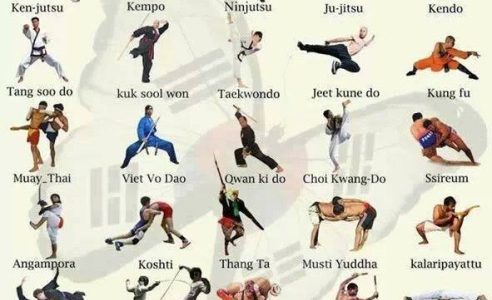The International Trip And Development Of Martial Arts Throughout Background
The International Trip And Development Of Martial Arts Throughout Background
Blog Article
Write-Up By-Chu Fallon
Martial arts have a remarkable background that spans centuries and continents. You could locate it appealing how old practices like Shuai Jiao and Kalaripayattu laid the groundwork for modern-day fight strategies. These self-controls not just emphasize physical abilities however additionally mirror the societies that birthed them. As you discover their advancement, consider just how globalization has actually changed these traditional forms into hybrid styles. What impacts do you believe have shaped today's martial arts landscape?
Ancient Martial arts: The Structures of Fight
As you look into the world of old martial arts, you'll uncover the rich structures that shaped battle strategies throughout societies. Very early techniques concentrated on Self-Defense and survival, commonly including strikes, hurting, and weapons.
In ancient China, for example, techniques like Shuai Jiao stressed throws and joint locks, while India's Kalaripayattu showcased dexterity and liquid movement. Japanese samurai established Kenjutsu, a polished swordsmanship that highlighted discipline and technique.
These martial arts offered not just for battle but additionally as a way of personal advancement, instilling values like respect and perseverance. The mixing of these techniques in time prepared for the varied martial arts you see today, each reflecting the unique ideologies and needs of its society.
The Social Impact on Martial Arts Advancement
While martial arts commonly mirror the useful needs of a society, they also personify the cultural worths and beliefs of their beginnings. When you discover different martial arts, you'll notice how they're affected by religion, philosophy, and social norms.
For example, the emphasis on respect and self-control in Japanese martial arts comes from Zen Buddhism and samurai culture. In contrast, Brazilian Jiu-Jitsu promotes versatility and method, shaped by the need for efficiency in a varied, multicultural atmosphere.
You might find that the routines, attires, and training approaches show a community's background and identity. By understanding these social influences, you deepen your gratitude of martial arts and their role fit human experiences across the globe.
Modern Adaptations and the Globalization of Martial arts
Martial arts have changed dramatically in recent years, adjusting to modern culture and global impacts. You'll see that traditional types have mixed with modern strategies, developing hybrid styles like MMA. These adjustments satisfy diverse audiences, making martial arts accessible and attractive globally.
With what are the different types of martial arts of social media and electronic systems, you can discover tutorials and competitors from all edges of the world, breaking geographical obstacles. This globalization has led to a shared appreciation for various disciplines, from Brazilian Jiu-Jitsu to Taekwondo.
As you engage with these arts, you'll recognize they're not almost fight; they advertise fitness, discipline, and psychological well-being.
Inevitably, contemporary adaptations have actually improved the martial arts landscape, making it a vibrant and evolving practice.
Conclusion
In exploring the history and development of martial arts, you uncover an interesting blend of strategies, societies, and philosophies. From mouse click the next web site -controls like Shuai Jiao and Kalaripayattu to the modern versatility seen in MMA, martial arts mirror humankind's pursuit for Self-Defense and individual development. As you engage with these methods, you not only gain abilities yet additionally a much deeper gratitude for the diverse traditions that shape our globe today. So, continue your trip and accept the art of fight!
